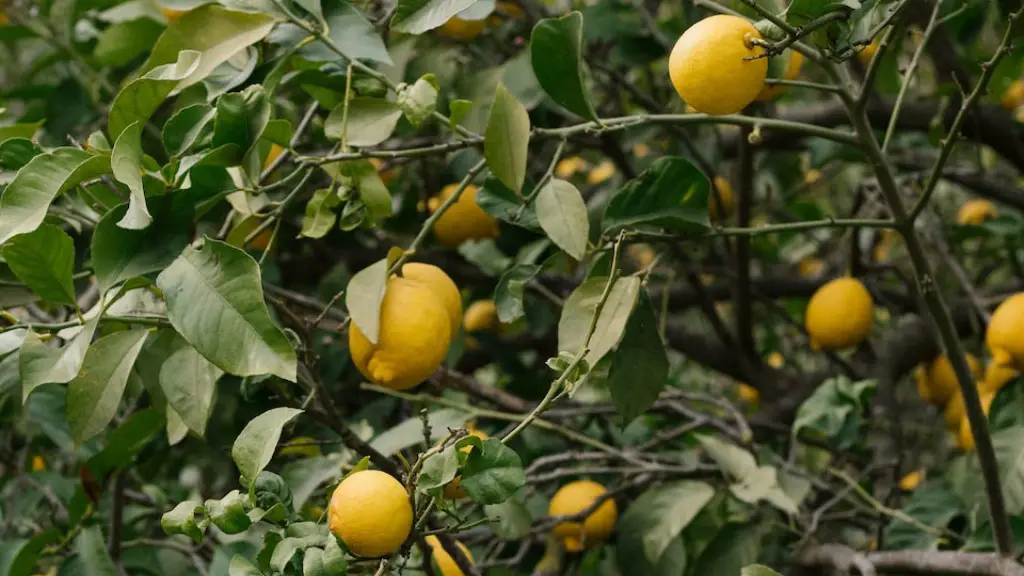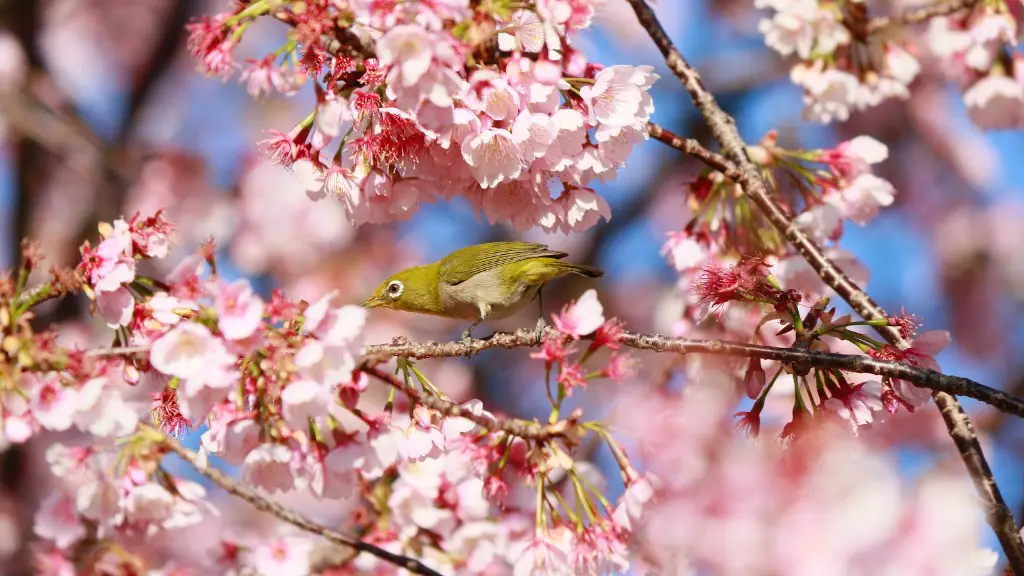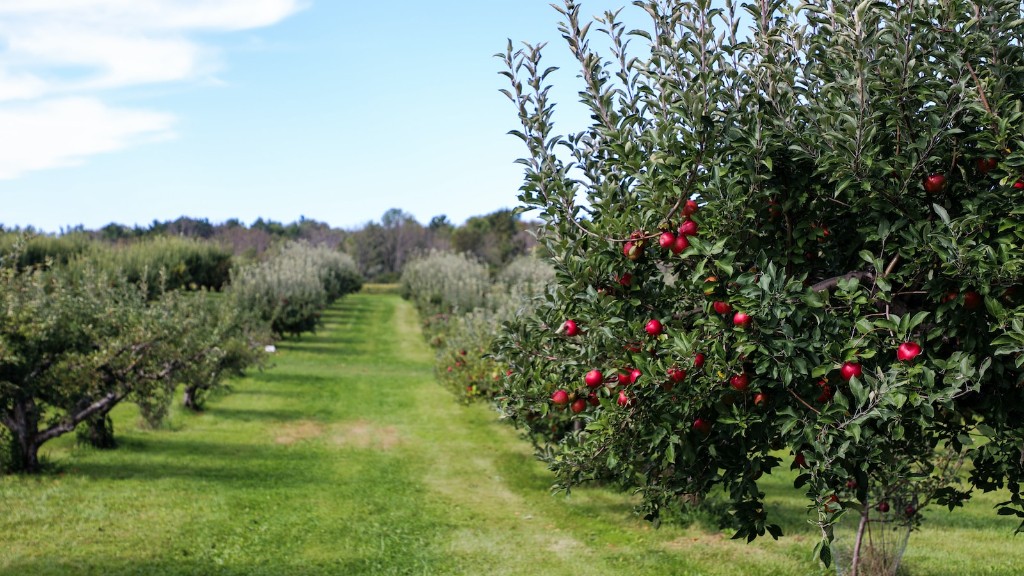One possible reason your palm tree leaves may be turning brown is due to a nutrient deficiency. For example, if the leaves are not receiving enough nitrogen, they may turn yellow or brown. Another possibility is that the tree is not getting enough water. If the leaves are wilted or dry, this is a sign that the tree needs more water. Brown leaves can also be a sign of disease or pests. If you see any insects or fungal growth on the leaves, this could be the problem. Finally, palm trees are sensitive to cold weather and frost. If the leaves are brown and brittle, this could be a sign that the tree has been damaged by cold weather.
Palm trees usually turn brown when they’re stressed from too much heat, cold, or lack of water.
Should I cut off brown palm leaves?
When leaves are entirely brown or yellow, it is an indication that they are no longer receiving nutrients from the plant. Cutting these leaves off at the base helps the plant to allocate its resources more efficiently and can prevent damage to healthy parts of the plant. If only part of the leaf is brown or yellow, it is generally safe to remove only the affected area.
If you have a brown palm leaf, it is best to remove the damaged area and try to improve your care routine or plant environment so new, healthy leaves can grow. Once a leaf has turned brown, it cannot turn green again.
What does an overwatered palm look like
If you see any of these signs in your palm tree, it is likely that it is being overwatered. Overwatering can lead to a number of problems for palm trees, including root rot, leaf drop, and yellowing leaves. If you think your palm tree may be overwatered, try to correct the problem by allowing the soil to dry out more between waterings.
The tree isn’t getting enough water
The tree needs more water. Check the soil to see if it is dry. If it is, water the tree.
Can brown palm leaves turn green again?
If you have a palm tree with completely brown palm fronds, it is most likely dead and will not turn green again. This is a natural process for palms as they will shed dead fronds as new ones grow. Patience is key here – wait for the palm to renew its crown to get rid of the damaged fronds.
A new palm should be watered once a day during its first week, every other day during its second week, and three times a week during its third week. Once the palm is established, watering should be done only 2-3 times per week, and this is only in the absence of rainfall.
What does a sick palm tree look like?
If the top center stalks of your palm tree are brown and/or shriveling, it is not doing well. This is the most common sign that your palm tree is sick.
If you notice your palm tree’s fronds are wilting, discolored, or stunted, this may be a sign that the tree is dying or already dead. In some cases, the damage can be stopped and reversed to save the tree, so don’t panic. Be sure to watch for other signs of trouble, such as rotten trunks or discoloration of the leaves, and call a professional if you are unsure how to proceed.
Will a brown palm tree grow back
A palm tree will shed its leaves when they turn brown and die. The tree will continue to grow new leaves from the top of the tree. There are some species of palm trees that don’t turn brown and shed their leaves, but the trunk is full of green healthy leaves.
If you tend to overwater your palms or don’t give enough water, one way to avoid this is to get a soil wetness meter to check for soil dampness. You can also stick your finger into the soil and if the first 2 inches are dry, it is ok to water typically.
How can you tell the difference between overwatering and underwatering?
When plants wilt, it means that they are not getting enough water. This can be due to overwatering or under-watering. To figure out which it is, you need to check the soil. If the soil is wet, then the plant is overwatered. If the soil is dry, then the plant is underwatered.
If you notice any of the above symptoms in your plants, it is important to take a closer look at the watering schedule. Under-watering is one of the most common issues and is usually easily fixed by simply increasing the frequency or amount of water. However, overwatering can be much more problematic. Be sure to check the soil before watering and only water when the top inch or so is dry. If you suspect that overwatering is an issue, it is important to take steps to improve drainage and allow the soil to dry out more between waterings.
Does Epsom salt help palm trees
If your palm is suffering from a magnesium deficiency, Epsom salt can be a good supplement in addition to regular fertilizer applications. Sprinkle 2 to 3 pounds of Epsom salt under the tree’s canopy, then water.
When used as directed, Miracle-Gro Palm Tree Food is designed to help prevent overfeeding and burning, and to help produce deep green, faster growing foliage. This palm tree food also helps prevent fronds from yellowing and curling, so you can enjoy your palms without worrying about them!
Do palm trees need full sun?
Palms are a diverse group of plants, and each species has different sun and soil requirements. Some palms need full sun to thrive, while others prefer shady garden spots. Too much harsh sun can damage palm fronds, just as it can damage human skin. In general, however, palms adapt well to a wide range of soils, as long as the soil drains well.
Most palms like evenly moist soil and bright, indirect light. Growing near a west- or south-facing window (but not where the sunbeams will directly hit the plants) is a great choice.
Conclusion
The leaves on a palm tree can turn brown for a number of reasons, including exposure to too much sun, lack of water, or pests. If the leaves are only slightly brown, they may just need more water. However, if the leaves are significantly brown or black, it could be a sign of a more serious problem, such as fungal diseases.
The most likely reason your palm tree leaves are turning brown is due to a lack of water. palms are very drought-tolerant, but they still need a good soaking every once in awhile. If you suspect that lack of water is the problem, try slowly and deeply watering your palm tree. If the leaves are still brown after a deep watering, then there may be another reason for the browning leaves, such as disease or pests.




